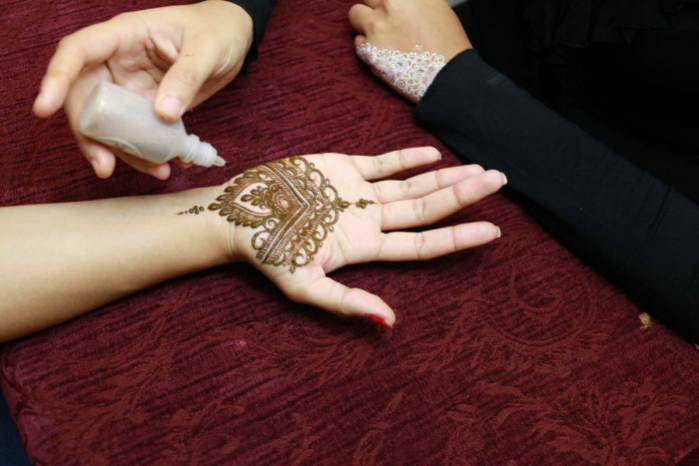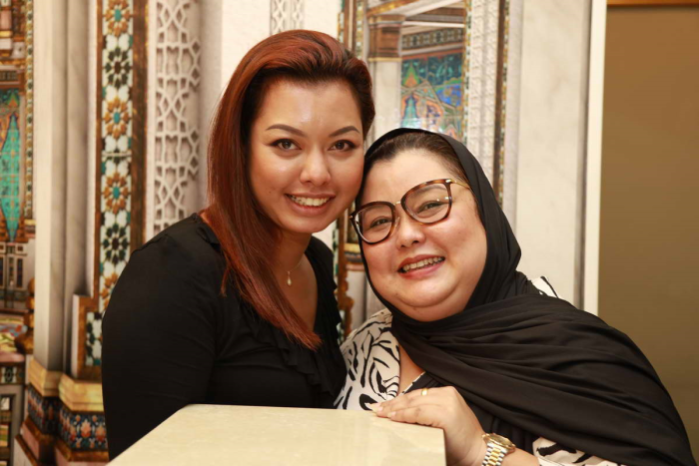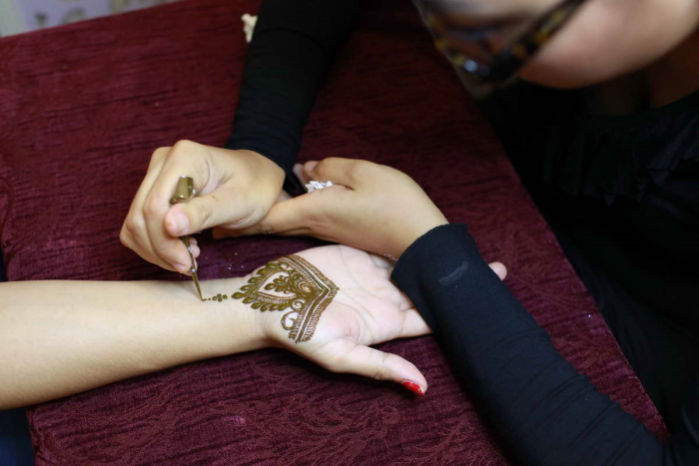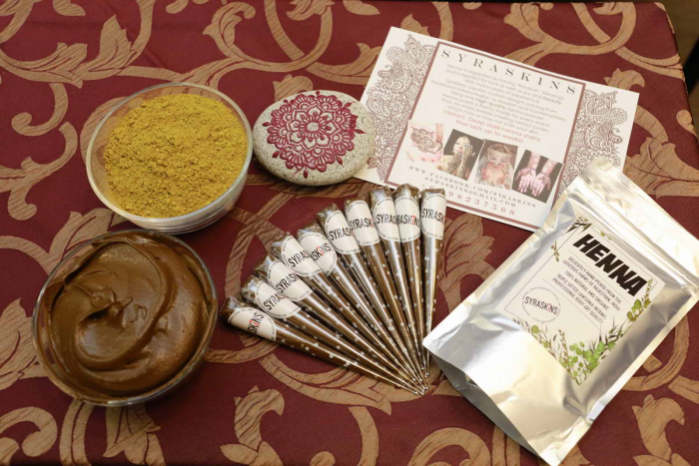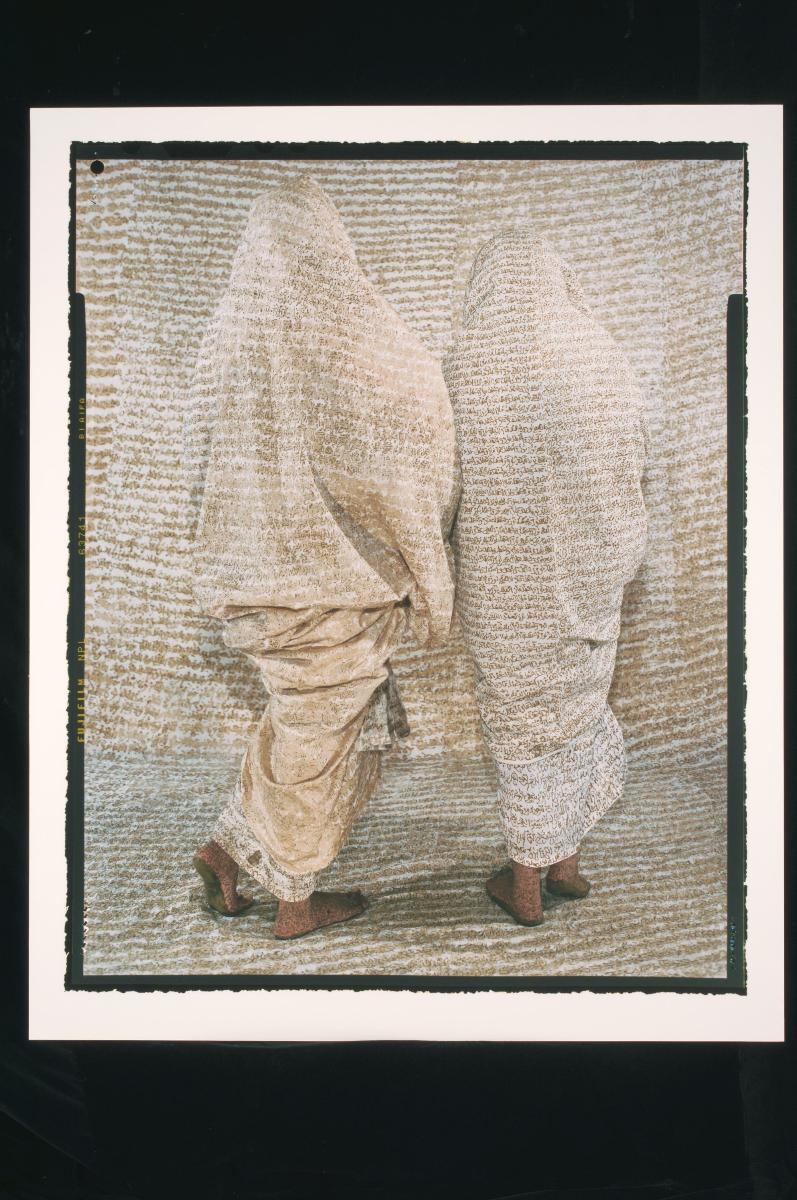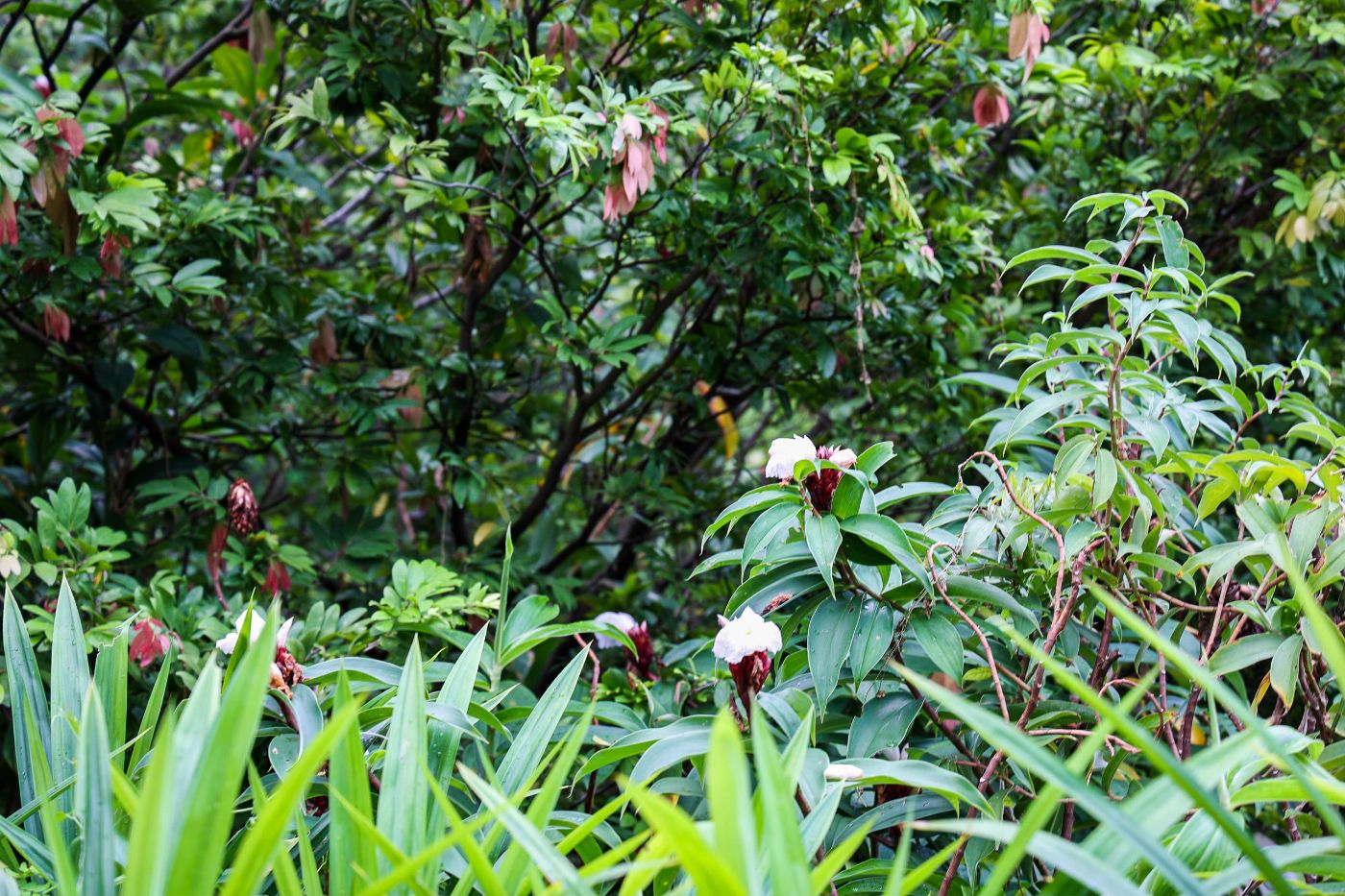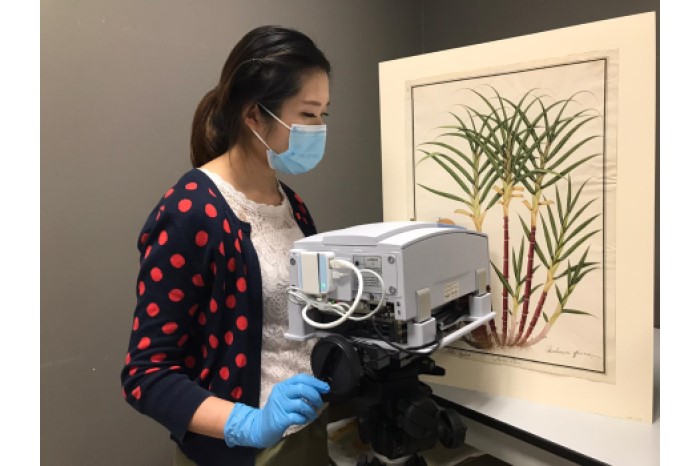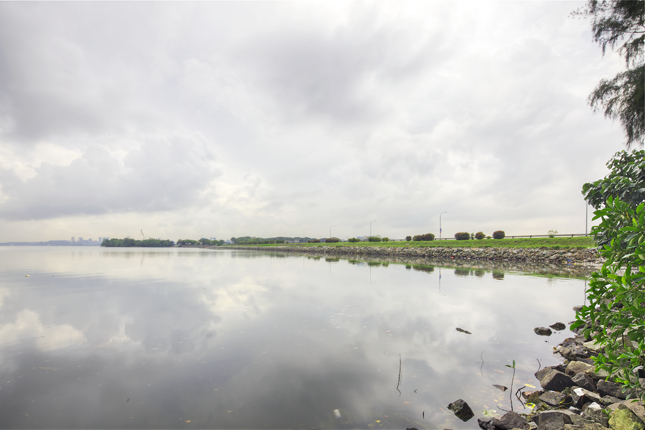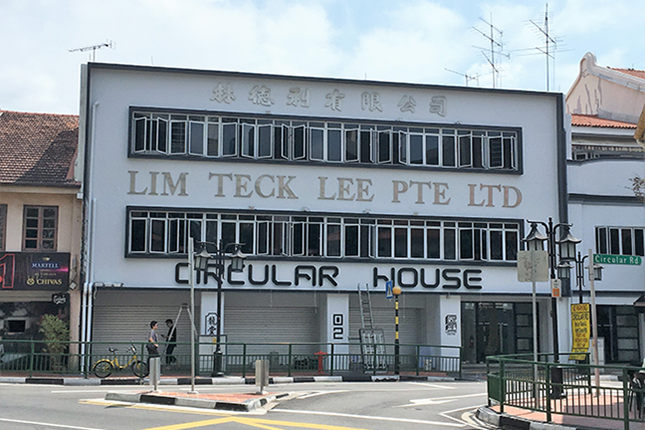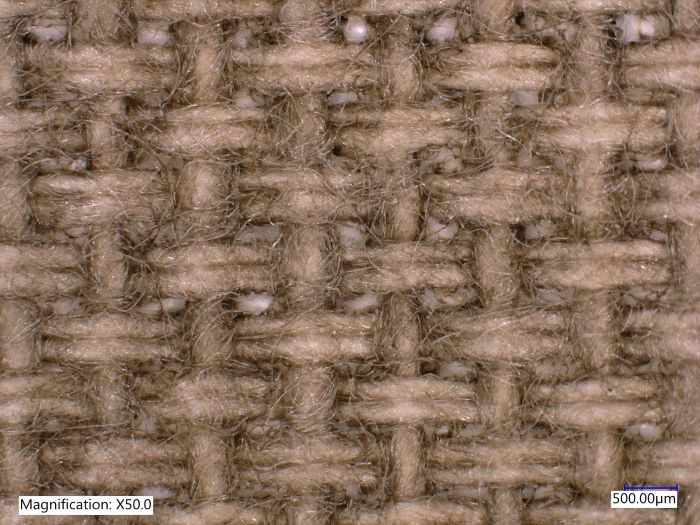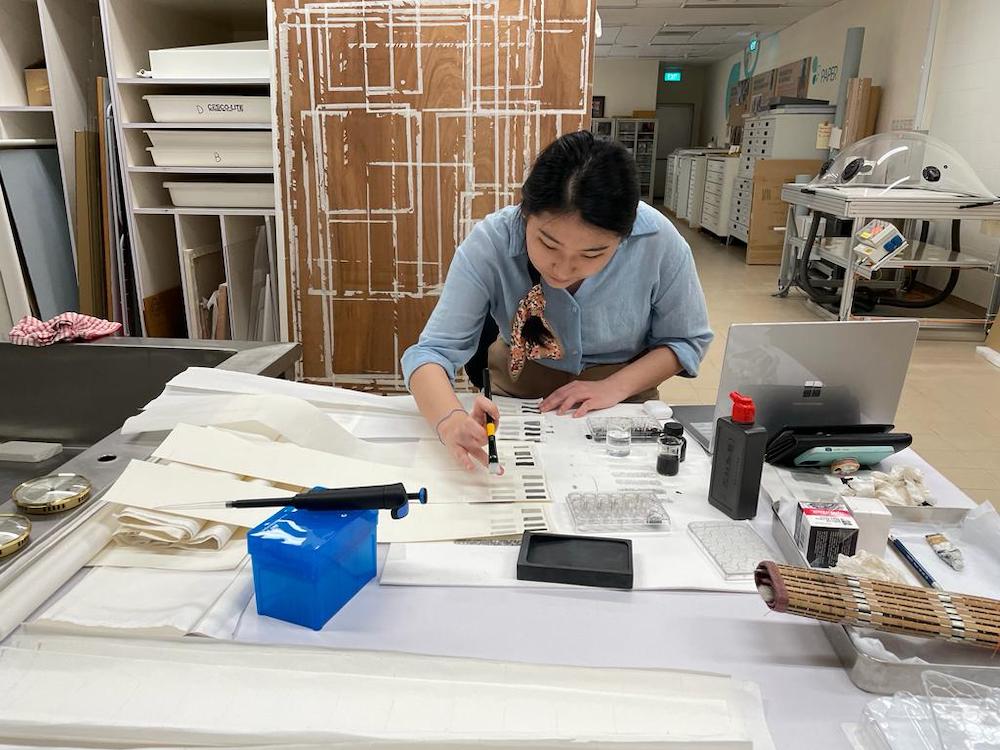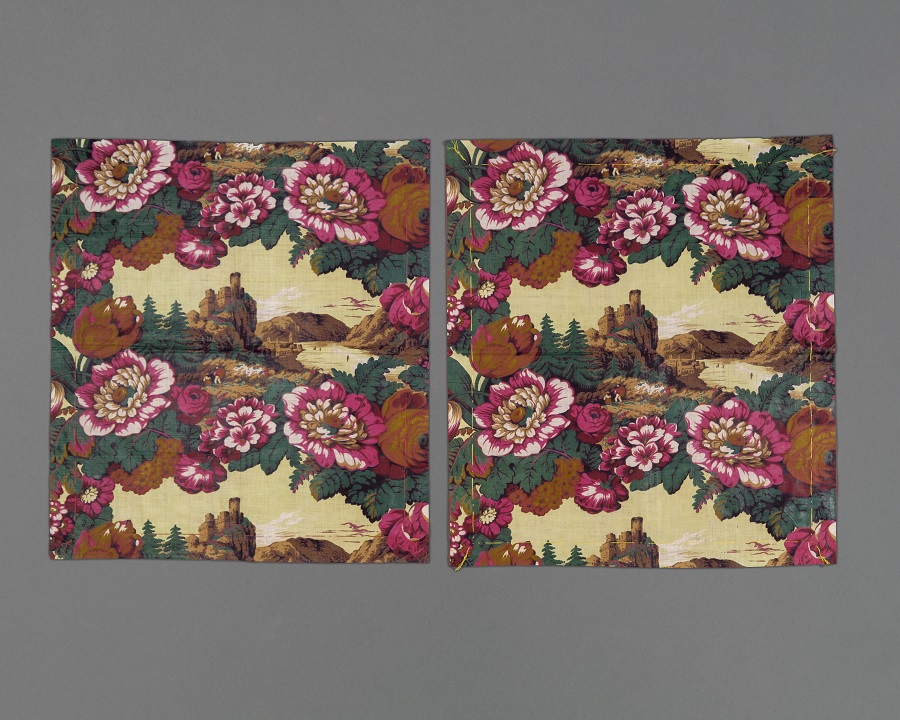Henna
Henna is a dye obtained from the henna plant (lawsonia inermis) native to Asia, Australia, and Northern Africa. It is typically used by Indian and Middle Eastern communities for cultural and religious occasions, as well as for beauty and cosmetic purposes. In Singapore, henna has particular cultural significance for the Malay and Indian communities, and has also increasingly gained popularity as a form of contemporary body art extending to other communities as well.
Geographic Location
The term ‘henna’ is derived from the Arabic word الحناء (al-ḥinnā), used to describe the henna plant itself, and is also often used interchangeably with the term ‘mehndi’, derived from the Sanskrit word ‘mehndika,’ or ‘marudaani’ in Tamil, or ‘inai’ in Malay. More specifically however, the term ‘henna’ can refer to the plant, its ink and the final tattoo on the skin, while ‘mehndi’ denotes the tattoo and design itself. While the origins of henna cannot be traced to one distinct location or event, the henna plant’s native habitat is in areas with a tropical monsoon climate, which would give insight to its use in the countries where it was first discovered, before being traded and exported to other regions in the world. Henna is used widely across the world, particularly in the Middle Eastern countries of Egypt, Morocco, Israel and Turkey, African countries such as Somalia, Sudan and Yemen, and in Asia – predominantly in India, Pakistan, Bangladesh, Malaysia and Singapore.
Communities Involved
In Singapore, henna is used primarily by the Indian and Malay communities, especially during weddings and festive events such as Deepavali and Hari Raya Puasa. It is believed to convey prosperity, good health, and well wishes to those who use it, as well as a form of beautification typically used by women. However, men may also apply henna at weddings to identify themselves as the groom. Typically, women tend to apply more intricate designs while men often apply simpler circular shapes. Additionally, in its modern use, henna is a form of body art popular amongst both genders, similar to that of (temporary) tattoos.
Associated Social and Cultural Practices
Henna is used as an adornment for cultural celebrations and rites of passage in Indian and Malay communities. These occasions include:
- Deepavali
As part of Deepavali festivities observed by Hindus, Jains and Sikhs, the application of henna is a significant part of the celebration of the festival which involves the community dressing their best. Henna art is typically applied by henna artists – many of whom have stalls set up at Deepavali bazaars – or by relatives in the days leading up to Deepavali. - Hari Raya Puasa
In Singapore, the application of henna is starts from as early as during the Ramadan period, where henna stalls can be found aplenty at the annual Ramadan Baazar in Geylang Serai. This practice is distinct from that in countries such as India and Pakistan where henna is typically applied only on the eve of Hari Raya. - Weddings
Most notably, henna plays a big role in Hindu and Muslim wedding ceremonies. While henna is an important feature as part of the dress-up for the wedding day, there are also nuptial and pre-wedding ceremonies where henna is applied. For the Indian community, families may host a mehndi ceremony for the bride and bridal party prior to the wedding day, where the application of henna is believed to symbolise protection, health and fertility of the bride. - Baby Showers and Pregnancy/Birth Celebrations
Another occasion where henna is featured prominently is during baby showers or to ceremonies to celebrate pregnancy or the birth of a child. During pregnancy, henna designs are drawn on the woman’s belly and regarded as a form of blessing for the mother and unborn child, and a way of celebrating the changes in an expectant mother’s body and life. - Other Celebrations, Festive Occasions and Reasons
Henna art may also be featured at celebrations and events which involve other communities, such as the annual Racial Harmony Day celebrations in schools to commemorate Singapore’s multicultural heritage. Henna is also believed to have cooling properties and reduces bodily heat, hence the application of henna on the hands and feet during potentially stressful and crowded events such as weddings – especially in the warm climates of the Middle East, South Asia, and Southeast Asia - is done with the intention to ensure the wellness of the bridal party.
Experience of a Practitioner
While Henna artists in Singapore generally operate as freelancers or as home-based businesses, with several also at stalls set up during the annual Deepavali and Ramadan bazaars in the month leading up to these festivals, there are also established businesses. One of the more established henna businesses in Singapore is SyraSkins, which has been in operation for more than ten years. SyraSkins is a family business set up and run by two sisters, Syra and Mehroon Gulam. Coming from a large family of mixed ethnicity, the sisters were involved in many family weddings where henna was applied at wedding parties. Syra dabbled with henna from the age of four and attributes her keen interest in the art to the knowledge transmitted by her mother, aunties and cousins in applying henna at weddings and various other celebrations. Today, Syra makes her own henna cones, with imported henna powder from India, and unlike commercial henna which may incorporate chemicals for a longer shelf-life, she does not add any additives or artificial coloring. Instead, she uses natural henna and infuses the product with pure essential oils such as lavender, rose and geranium for aroma. The sisters attribute much of SyraSkins’ success to their style of henna designs, which are symmetrically drawn on both hands and/or feet. As a result, customers have been able to identify them from their signature geometric designs, which are distinguishable from designs that are more culturally influenced, and may include motifs such as flowers and animals, for example.
Watch: SyraSkins
Present Status
Though henna is associated closely with cultural practices of the Indian and Malay communities in Singapore as a form of adornment for festive events and special occasions, henna art has been growing in popularity amongst the wider community for use as temporary tattoos, with a noticeable shift in designs to more varied and contemporary styles. The long-standing cultural significance of henna use amongst the Malay and Indian communities in Singapore coupled with the broader appeal of henna art amongst the wider community has supported the sustainability of the practice and the continued demand for henna artists and their craft.
References
Reference No.: ICH-106
Date of Inclusion: March 2024
Allnatural Jagua & Henna Compare Similarities and Differences. (n.d.). Jagua All Natural Body Art. Retrieved August 4, 2021, from http://www.jaguaallnaturalbodyart.com/jagua_henna_compare.html
Al-Rubiay, K. K., Jaber, N. N., Al-Mhaawe BH, & Alrubaiy, L. K. (2008). Antimicrobial efficacy of henna extracts. Oman medical journal, 23(4), 253–256
Big Henna Contest. (n.d.). [Indian Henna Design]. Indian Henna Design. https://hennaintensiveandretreat.wordpress.com/2016/02/08/cultural-influences-on-henna-patterns/
C. (2018, March 13). Differences Between Mehndi and Henna. Retrieved May 8, 2021, from http://www.differencebetween.net/language/words-language/differences-between-mehndi-and-henna/
Chevroulet, N. (2016, September 29). Hair dyes in Singapore do not contain excessive skin sensitisers: Case. Retrieved May 10, 2021, from https://www.straitstimes.com/singapore/hair-dyes-in-singapore-do-not-contain-excessive-skin-sensitisers-case#:%7E:text=In%20Singapore%2C%20levels%20of%20skin,and%201.25%20per%20cent%20respectively
Chou, R. (2017, August 14). Henna 101: How to Dye-Release Henna. Retrieved May 9, 2021, from https://www.ancientsunrise.blog/henna-101-dye-release-henna/
Encyclopaedia Britannica. (n.d.). Henna. Retrieved August 4, 2021, from https://www.britannica.com/plant/henna
Ghanem, K. (2018, August 16). Seven Contemporary Henna Designs For Eid. Retrieved May 9, 2021, from https://en.vogue.me/beauty/contemporary-henna-designs-for-eid/
Henna History Singapore. (n.d.). Retrieved May 9, 2021, from https://www.riesethiopia.com/ulwp65oj/1a2a81-henna-history-singapore
Henna in Different Countries. (2016, September 5). Retrieved May 10, 2021, from https://hennacat.com/blog/henna-different-countries/
Henna: Overview, Uses, Side Effects, Precautions, Interactions, Dosing and Reviews. Retrieved May 17, 2021 https://www.webmd.com/vitamins/ai/ingredientmono-854/henna
Henna, S. [Shaimaa Henna]. (2020, July 3). Rihanna Henna Tattoo [Video]. YouTube. https://www.youtube.com/watch?v=2h3RP4O0opw&feature=youtu.be
J. (2020, May 25). 4 Unique Hari Raya Traditions in the World You Didn’t Know. Retrieved May 9, 2021, from https://thelitmovement.com/4-unique-hari-raya-traditions-in-the-world-you-didnt-know/
Kheir, A., Gaber, I., Gafer, S., & Ahmed, W. (2017). Life-threatening haemolysis induced by henna in a Sudanese child with glucose-6-phosphate dehydrogenase deficiency. Eastern Mediterranean Health Journal, 23(1), 28–30. Retrieved from http://www.emro.who.int/emhj-volume-23-2017/volume-23-issue-1/life-threatening-haemolysis-induced-by-henna-in-a-sudanese-child-with-glucose-6-phosphate-dehydrogenase-deficiency.html
Lewis, R. (2018, September 18). Henna: Israel’s Most Colourful Wedding Tradition. Retrieved May 9, 2021, from https://theculturetrip.com/middle-east/israel/articles/henna-israels-most-colourful-wedding-tradition/
Maternity Henna Belly Blessings. (n.d.). Line and Roots. Retrieved August 4, 2021, from https://www.lineandroots.com/maternity-henna-belly-blessings/
Mehndi magic made amid Diwali. (2015, November 11). ENCA. https://www.enca.com/life/mehndi-magic-made-amid-diwali-preparations
Mehroon Gulam, Insyrazasha Gulam Interview. Singapore, 13 October 2020.
Moazzam, I. (2014, August 7). A brief history of henna. Retrieved April 8, 2021, from https://tribune.com.pk/story/741476/a-brief-history-of-henna
Ng, M. and Khalid,C. (2019, May 30). The Best Henna Artists in Singapore. Retrieved May 17, 2021 https://www.timeout.com/singapore/shopping/best-henna-artists-in-singapore
Nithiyah, N. (2019, October 23). Wearable art: Get (temporarily) inked with Arabian and Moroccan-inspired henna designs in Singapore. Honeycombers. https://thehoneycombers.com/singapore/henna-artists-singapore-mehndi-white-henna-tattoo/
Pregnancy Henna. (n.d.). Retrieved May 9, 2021, from https://www.divinehenna.com.au/henna-pregnancy-traditions/
Racial Harmony Day @ Expo. (2012, July 26). BPDGTravels. http://bpdgtravels.blogspot.com/2012/07/racial-harmony-day-expo.html
Refael, T. (2018, December 17). The Charm of Jewish Henna Ceremonies. Jewish Journal. https://jewishjournal.com/community/277707/the-charm-of-jewish-henna-ceremonies/
Sansare, M. (2017, October 25). Benefits of Henna for Hair Health. Retrieved May 18, 2021 https://www.femina.in/beauty/hair/benefits-of-henna-for-hair-health-55622-4.html
Seah, M. (2017, September 14). How to use Henna safely. Retrieved May 10, 2021, from https://www.straitstimes.com/lifestyle/be-safe-with-henna
Shah, K. F. (2021, April 24). Silk & Stone - Origin and History of Henna. Retrieved May 8, 2021, from https://silknstone.com/about-henna/
Stalnaker, H. (2017, September 28). The Healing Benefits of Henna. Retrieved May 9, 2021, from https://www.thelotusroomnashville.com/living-ayurveda/2017/9/25/healing-benefits-of-henna
The Art and History of Henna as Bodyart. (n.d.). Retrieved May 8, 2021, from https://www.fragrancex.com/fragrance-information/the-art-and-history-of-henna-as-bodyart.html
The Cultural and Religious Stories Behind Henna Body Art - ULC Blog. (2017, September 19). Retrieved May 9, 2021, from https://www.universallifechurch.org/2017/09/19/the-cultural-and-religious-stories-behind-henna-body-art/
Thiagarajan, S. (2020, October 15). Deepavali is not the Tamil New Year. So what is it about? Mothership. https://mothership.sg/2020/10/deepavali-explainer/
This Is What Islam Says About Applying Henna. (2019, October 27). Retrieved May 9, 2021, from https://theislamicinformation.com/islam-allowed-henna/&
Times of India. (2017, May 17). Everything you wanted to know about Arabic mehndi designs. https://timesofindia.indiatimes.com/life-style/beauty/everything-you-wanted-to-know-about-arabic-mehndi-designs/articleshow/58161842.cms
Top 6 Deepavali And Diwali Events With Kids In Singapore. (2020, November 4). Little Steps Asia. https://www.littlestepsasia.com/singapore/events/seasonal-events-guides/best-deepavali-events/
Venison, A. (2018, September 24). Henna Reinvented: How The Art Form is Being Redefined. Retrieved May 9, 2021, from https://en.vogue.me/beauty/henna-reinvented-modern-world/




